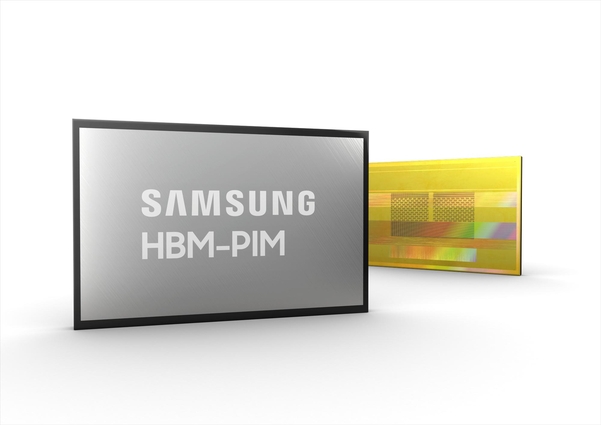Input 2021.02.17 11:00
Memory self-processing without data exchange between CPU and memory
Samsung Electronics “will preoccupy the market after completion of verification in the first half”

According to Samsung Electronics on the 17th, HBM-PIM was unveiled through a paper at ISSCC, which is regarded as the world’s most prestigious conference in the semiconductor field. During the first half of the year, the test and verification will be completed for customers, and the technology will be preoccupied.
Using PIM technology, Samsung Electronics installed an AI processor on HBM2 Aquabolt, which began mass production in January 2018. HBM2 Aquavolt is a high-bandwidth memory semiconductor used for ultra-high-speed data analysis in high-performance computing (HPC) such as supercomputers and AI accelerators.
When HBM-PIM is applied to the existing AI system, the performance is more than doubled compared to the previous HBM2. In addition, the energy consumed by the system is reduced by more than 70%.
Another advantage is that the existing HBM interface can be used as it is. Even if HBM-PIM is newly applied, it is possible to build an AI accelerator system without changing hardware or software.
Recently, AI technology has been advanced, and its application area is also expanding. However, the central processing unit (CPU)
It has been unable to escape from the traditional arithmetic structure (the von Neumann structure), which is an operation of fetching and executing instructions from memory and then storing the result back into memory. In addition, in the case of the von Neumann structure, when the amount of data exchanged between the CPU and the memory increases, the processing of the task is delayed.
To overcome this structural problem, Samsung Electronics installed an AI engine in the memory bank (the smallest logical unit in the main memory) to maximize parallel processing. Even if the CPU and the memory don’t have to exchange data, the memory itself can perform computational processing. The company explained that the energy efficiency of the AI accelerator system was also improved through such efficient operation processing.
In the first half of the year, Samsung Electronics plans to mount HBM-PIM in AI accelerators of various customers and start testing and verification. In the future, we will also work to standardize the PIM platform.
“HBM-PIM is the industry’s first artificial intelligence customized PIM solution that can maximize the performance of AI accelerators,” said Park Kwang-il, executive director of the product planning team at Samsung Electronics’ memory business unit, and Samsung Electronics continues to strengthen cooperation with customers to establish a PIM ecosystem. I will go out.”
“HBM-PIM is a remarkable achievement in terms of performance and energy efficiency for AI applications. We will continue to cooperate with Samsung Electronics in the future to evaluate HMB-PIM systems,” said Rick Stevens, head of CELS (Computer, Environment and Life Sciences), Argon National Laboratory. I look forward to it.”
